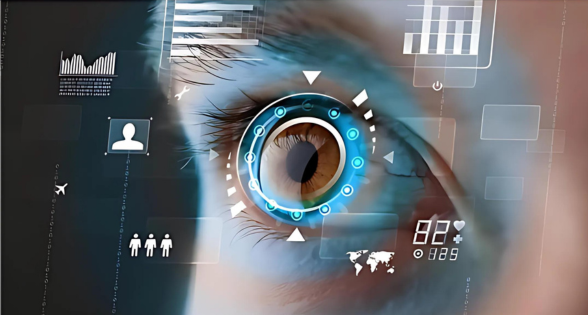Computer Vision is one of the most exciting advancements in technology today. It is rapidly transforming various industries by allowing machines to see, interpret, and understand the visual world just like humans do. With the power of artificial intelligence (AI) and machine learning, this technology enables businesses to automate processes, improve efficiency, and enhance customer experiences. In this blog, we’ll explore the key benefits and uses of computer vision in business, as well as how it is reshaping industries worldwide.
What is Computer Vision?
Computer vision is a branch of AI that focuses on enabling machines to process, analyze, and interpret images and videos. Essentially, it mimics human vision by allowing computers to recognize objects, understand scenes, and make decisions based on visual inputs. This technology is applied in a range of areas, including facial recognition, object detection, and image classification.
Thanks to advancements in deep learning and AI algorithms, this field has evolved substantially in recent years. It can recognize patterns, detect anomalies, and even predict outcomes, making it a valuable tool for businesses across different sectors.
Key Benefits of Computer Vision in Business
- Automation of Repetitive Tasks
Computer vision automates time-consuming tasks like product inspection and quality control, improving accuracy and efficiency. Consequently, this reduces human error and saves time in industries such as manufacturing, leading to greater productivity and cost savings. - Enhanced Security
By integrating with surveillance systems, Enhances security by detecting suspicious activities or unauthorized access in real-time. As a result, industries like retail and airports use this technology for theft prevention and facial recognition to improve safety and security. - Improved Customer Experience
Computer visions enhances customer experiences by enabling technologies like virtual try-ons in retail and obstacle detection in self-driving cars. Therefore, these applications offer more interactive, seamless, and convenient customer service, improving satisfaction. - Cost Savings
Automating tasks with computer visions helps reduce operational costs. For example, in agriculture, drones monitor crops, while in healthcare, medical images are analyzed quickly, saving time and reducing labor costs. - Data-Driven Insights
Businesses use the data generated by computer visions to gain insights into customer behavior, inventory management, and product performance. As a result, this information helps make better decisions, improve efficiency, and optimize business processes.
Applications of Computer Vision in Various Industries
- Retail:
In retail, this technology is revolutionizing business operations. Stores utilize it to track customer traffic, optimize store layouts, and manage inventory. Additionally, retailers are implementing facial recognition to customize customer experiences by suggesting products based on previous purchases and preferences. - Healthcare:
In healthcare, AI is used to analyze medical images, such as X-rays and MRIs, with incredible accuracy. This helps doctors diagnose diseases early and recommend the best treatments. Furthermore, it can be used in telemedicine, allowing doctors to assess patients remotely using images or video. - Manufacturing:
In manufacturing, AI systems are used for quality control, inspecting products for defects, and ensuring that production lines are running smoothly. Moreover, it can be used to monitor equipment and detect potential issues before they lead to downtime. By using these systems, manufacturers can improve efficiency and reduce the likelihood of errors. - Agriculture:
Farmers are using computer visions to monitor crops and livestock. Drones equipped with this technology can survey large areas of farmland, detecting issues such as water stress or pests. Consequently, this allows farmers to take corrective action quickly, leading to healthier crops and increased productivity. - Automotive Industry:
One of the most well-known applications is in the development of self-driving cars. These systems help vehicles “see” the road, detect obstacles, and navigate safely. Additionally, it is used in advanced driver assistance systems (ADAS) to improve vehicle safety by detecting potential collisions or lane departures. - Logistics and Supply Chain
Computer visions is helping companies in logistics and supply chain management by automating the inspection of goods, tracking packages, and optimizing warehouse operations. Furthermore, it can be used to monitor the condition of goods during transit, ensuring they arrive at their destination in perfect condition.
Challenges of Implementing Computer Visions
While computer vision offers many benefits, it also comes with challenges. Developing and implementing these systems can be costly, especially for small businesses. Additionally, businesses must ensure they have access to high-quality data for training AI models, as poor-quality data can lead to inaccurate results.
There are also privacy concerns related to the use of this technology, particularly when it comes to facial recognition. Consequently, companies must ensure they are using it ethically and in compliance with regulations.
Conclusion
Computer vision is undoubtedly changing the way businesses operate. Its ability to automate tasks, enhance security, improve customer experiences, and provide valuable insights makes it a game-changer across various industries. As this technology continues to evolve, we can expect to see even more innovative applications and benefits in the future. By embracing computer vision, businesses can stay ahead of the competition and continue to thrive in an increasingly digital world.
Incorporating computer vision into business operations may seem complex, but the long-term benefits far outweigh the challenges. As businesses continue to explore and adopt this technology, it’s clear that it will play a crucial role in shaping the future of industries worldwide.
